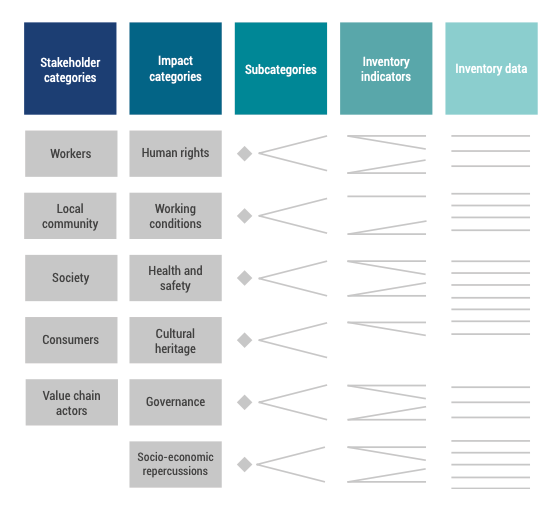Life Cycle Development
Introducing Social-LCA: Assessing Social Impacts for Sustainable Decision-Making
A new minimum wage policy – set at $40 per hour - in Hong Kong was implemented from May this year, but is it enough to even buy a proper meal at a local restaurant? How can companies and organizations do better to identify and represent the issues faced by the disadvantaged in our society? The new Guidelines for Social Life Cycle Assessment (S-LCA) was published by the UNEP/SETAC Life Cycle Initiative in 2020 to offer a systemic approach in assessing and identifying related problems in response to the increasing concern of social issues along the life cycle of products and services.
While S-LCA is in large part based on the ISO 14040 framework for Environmental Life Cycle Assessment (E-LCA), it goes beyond traditional Life Cycle Assessment (LCA) by considering the social aspects such as human rights, labor conditions, and social well-being in any supply chain. The stakeholder approach illustrated in Figure 1 helps identify potential and actual impacts (both positive and negative) that are socially significant for all stakeholders.

Figure 1. Assessment system from categories to inventory data
By implementing S-LCA, a consistent view of social hotspots (location or activity with high risk/impact) along the life cycle or value-chain is revealed, giving guidance to the decision-making process for the development of sustainable strategies and policies for improved well-being of stakeholders. This is particularly informative for formulating a company’s ESG strategy to demonstrate commitment to social responsibility and drive positive change.
S-LCA is particularly valuable because it complements Environmental Life Cycle Assessment (E-LCA), leading to a more holistic assessment approach. This integration is crucial because environmental and social issues are often interconnected and mutually influence each other, neglecting the social dimension of sustainability can lead to less effective solutions. While S-LCA does not aim to judge whether a product should be produced or not, it provides insights for decision-makers to formulate a targeted strategy for future developments which will benefit society.
When asked for his views, HKUST Professor Zhongmin Lu emphasized that the lack of awareness and educational resources around S-LCA is a significant challenge for potential practitioners. However, Prof. Lu believes that collaboration between academia and industry can address these gaps effectively. By working together, academics and industry professionals can foster more discussions and advance the understanding and implementation of S-LCA in practical contexts.
If you are interested in participating in future workshops/panel discussions on S-LCA, please fill in this survey: https://ust.az1.qualtrics.com/jfe/form/SV_6XS3lxL00gEBZoW